
All categories
Featured selections
Trade Assurance
Buyer Central
Help Center
Get the app
Become a supplier

(19646 products available)


















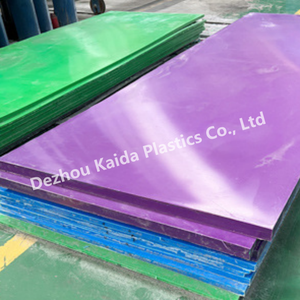



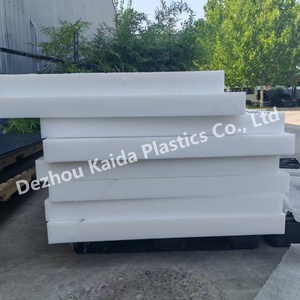
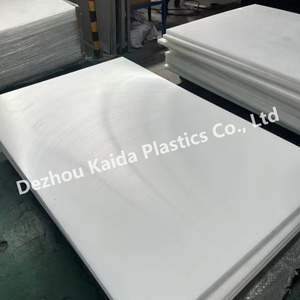

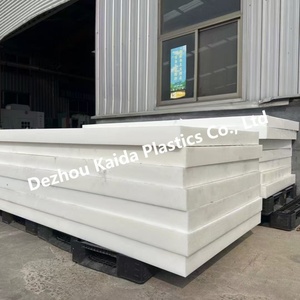









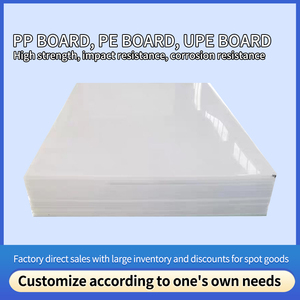














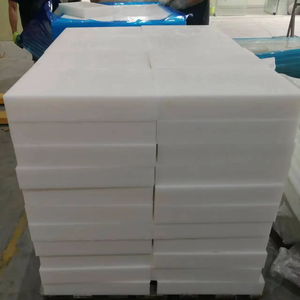

Polyethylene sheets HDPE are available in several types, each tailored for specific applications and requirements. Here are the main types:
Standard HDPE Sheets
Standard HDPE sheets are characterized by high density and are widely used in many industries due to their excellent balance of properties, such as strength, rigidity, and chemical resistance. They are usually black or natural and have a matte surface finish. These sheets are ideal for numerous applications, including industrial equipment guards, chutes, and liners, because of their ability to withstand harsh conditions and exposure to chemicals.
Textured HDPE Sheets
Textured HDPE sheets have a textured surface on one or both sides, providing enhanced grip and reduced sliding. This feature makes them suitable for applications where skid resistance is crucial, such as flooring in ramps, trailers, and playgrounds. The raised pattern on the sheet's surface traps air and reduces the contact area with the underlying surface, increasing its resistance to movement.
Colored HDPE Sheets
These sheets come in various colors and are used for applications where visual distinction and aesthetic appeal are important. They are often used for signage, decorative elements, and playground equipment. Colored sheets maintain the durability and chemical resistance of standard HDPE but provide additional visibility and design flexibility.
Foam-Core HDPE Sheets
Foam-core HDPE sheets have a foam-like core that significantly reduces weight without compromising strength. This feature makes them ideal for applications where weight savings are crucial, such as in aircraft interiors and portable equipment. These sheets are easier to handle and install due to their lightweight nature, which can reduce labor costs and improve efficiency in fabrication and installation.
Reinforced HDPE Sheets
Reinforced HDPE sheets have fiberglass or other materials integrated to enhance their strength and load-bearing capacity. They are used in applications requiring additional structural support, such as heavy-duty liners and load-bearing components. The reinforcement provides added tensile strength and impact resistance, making these sheets suitable for high-stress environments.
High-density polyethylene sheets are used in several industries and applications owing to their durability, flexibility, and excellent chemical resistance. Here are some common applications:
Packaging industry: Polythene sheets are used to make bags, containers, and protective covers due to their tough and moisture-resistant nature.
Construction industry: Builders use HDPE sheets as vapor barriers, roofing membranes, and ductwork because they resist chemicals and weather.
Automotive industry: HDPE sheets are used for underbody coatings, fuel tanks, and interior trim due to chemical resistance and long-lasting capacity.
Electrical industry: HDPE sheets are used as insulators and conduit bodies in electrical applications due to their high dielectric strength.
Medical industry: HDPE sheets make equipment covers, trays, and protective barriers due to their cleanliness and chemical resistance.
Retail industry: Store shelves, display units, and hangers are made of HDPE sheets due to their longevity and flexibility.
Agricultural industry: Farmers use HDPE sheets for greenhouse covers, liners, and shutters because they withstand chemicals and UV radiation.
Water industry: HDPE sheets make water tanks, pipes, and valves due to their resistance to corrosion and chemicals.
Food industry: HDPE sheets make cutting boards, trays, and containers due to their cleanliness and chemical resistance.
When purchasing HDPE sheets for sale, business owners need to consider various factors that affect the performance of the sheets. Here are some important factors that buyers should consider when buying HDPE sheets in bulk:
Impact strength
Business owners should get HDPE sheets with high impact resistance if their customers intend to use the sheets for applications that require a lot of force. The sheets will not shatter or break, making them ideal for manufacturing containers and construction materials.
Chemical resistance
In many industries, people use polyethylene sheets, and they use it for more chemical exposure. Therefore, business owners should get sheets with high chemical resistance to withstand such exposure. The sheets will remain stable and not react with the chemicals, leading to degradation.
Moisture resistance
Business owners should choose moisture-resistant sheets to prevent mold or mildew growth. Moisture will not penetrate the sheets, causing them to break down or warp.
UV resistance
HDPE sheets with high UV resistance are less likely to degrade when exposed to sunlight. Buyers should get sheets with high UV resistance for sale to customers who plan to use the sheets for outdoor applications.
Ease of fabrication
Buyers should get sheets that are easy to fabricate, weld, cut, and bend. Such sheets are convenient to work with and save time and labor costs for their customers.
Surface finish
HDPE sheets with smooth surfaces are easy to clean and maintain, making them ideal for use in the medical and food industry. On the other hand, sheets with textured surfaces offer better grip and slip resistance.
Electrical properties
Business owners should get sheets with high dielectric strength for applications that require electrical insulation. Such sheets will not conduct electricity.
Thickness
Buyers should get HDPE sheets in various thickness levels to enable their customers to choose what suits their needs.
Polyethylene sheets HDPE come in various designs tailored to specific applications and requirements. Here are some of them alongside their functions and features:
Textured Sheets
Textured polyethylene sheets have a rough surface that enhances grip and traction. This feature is particularly useful in applications such as ramps, walkways, and liners in material handling, where slip resistance is crucial. The texture is achieved through a simple manufacturing process that modifies the sheet's surface.
Colored and Marking Sheets
Colored and marking polyethylene sheets are available in a wide range of colors, which can be used for marking, coding, or aesthetic purposes. These sheets are often used in signage, display stands, and equipment casing. The sheets maintain their color under UV exposure and weather conditions, ensuring long-lasting visibility and appeal. The coloring is done during production through high-quality pigmentation.
Anti-Static Sheets
Anti-static polyethylene sheets are designed to dissipate static electricity, preventing the buildup of static charges. These sheets are crucial in electronic component packaging, cleanrooms, and environments where static discharge can damage sensitive equipment or disrupt electronic operations. The anti-static property is achieved by adding specialized anti-static agents during the manufacturing process.
Foamed Sheets
Foamed polyethylene sheets have a cellular structure, making them lightweight and offering excellent cushioning and insulation properties. These sheets are used in packaging materials, thermal insulation, and as protective barriers in construction. Their shock absorption capabilities make them ideal for protecting delicate items during transit. The sheets are produced by expanding the polyethylene material with blowing agents, resulting in a foam-like structure.
Perforated Sheets
Perforated polyethylene sheets have a series of holes or slits that allow for air, light, and water permeability. These sheets are commonly used in greenhouse covers, acoustic panels, and drainage applications. The perforations can be customized in size and pattern to suit specific permeability requirements while maintaining the sheet's structural integrity. The sheets are fabricated using specialized tools that precisely create the perforation patterns.
Q1: What are the advantages of using HDPE over other materials?
A1: HDPE offers several advantages over other materials, including excellent chemical resistance, high impact strength, low moisture absorption, and good weatherability. It is also lighter than many other materials, making it easier to handle and install. Additionally, HDPE is more cost-effective than many other materials, especially in large quantities.
Q2: Can HDPE sheets be recycled?
A2: Yes, HDPE sheets are recyclable. They are marked with the recycling symbol and can be processed to create new HDPE products. Recycling HDPE sheets helps reduce waste and conserves natural resources.
Q3: What is the lifespan of polyethylene sheets?
A3: Polyethylene sheets, especially high-density polyethylene (HDPE) sheets, can last anywhere between 50 to 100 years, depending on their exposure to sunlight and other environmental factors. They are often used in applications where durability and longevity are essential, such as in construction, automotive, and industrial settings.
Q4: Can HDPE sheets be painted or laminated?
A4: Yes, HDPE sheets can be painted or laminated. However, it is essential to prepare the surface properly by cleaning it and roughening it up slightly before applying paint. Special adhesives and techniques are required to laminate HDPE sheets effectively.